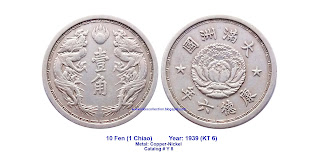In 1931 Japan China Manchukuo Manchukuo
Manchukuo was a Japanese puppet state carved out of Northeastern China prior to World War II. Due to a severe metal shortage towards the end of the war, it issued these unusual 1&5 Fen coin struck in a red cardboard-like material rather than metal. The coins are dated in the twelfth year of the reign of Emperor Kang Te of Manchukuo Manchukuo





কোন মন্তব্য নেই:
একটি মন্তব্য পোস্ট করুন